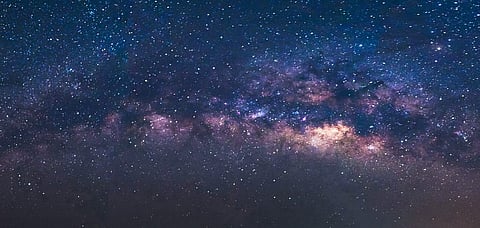
- Destinations
- Experiences
- Stay
- What's new
- Editor’s Picks
- Responsible Tourism
- CampaignsCampaigns
- Subscribe

After years of prying and investigating into the deepest spheres of the universe, astrophysicists released what they refer to as the &ldquolargest 3D map of the universe&rdquo. Sloan Digital Sky Survey(SDSS), an ongoing project involving scientists from prestigious institutions all around the globe, came out with results giving detailed measurements of more than two billion galaxies and quasars and covered eleven billion years of cosmic time.
&ldquoWe know both the ancient history and its recent expansion history fairly well, but there&rsquos a troublesome gap in the middle eleven billion years. For five years, we have worked to fill in that gap,&rdquo Kyle Dawson, a cosmologist at University of Utah and lead researcher in the project said in a statement.
The new results came out with the help of data collected from an optical telescope in New Mexico, added as a part of the extended Baryon Oscillation Spectroscopic Survey (eBOSS), one of SDSS&rsquos component surveys.
With detailed analyses of both eBOSS and previous experiments of SDSS, the scientists achieved the most accurate measurement of expansion history over the widest range of cosmic time.
Combining the observations of the eBOSS and the studies of the universe in its &ldquoinfancy&rdquo led the scientist to discover that the current expansion rate of the universe, Hubble Constant, is 10% lower than the value found from distances to the nearby galaxies.
&ldquoOnly with maps like ours can you say for sure that there is a mismatch in the Hubble Constant,&rdquo said Eva-Maria Mueller, lead analyser on the project from the University of Oxford.
The cosmic history unfolded by this map shows that about six billion years ago, acceleration of the universe&rsquos expansion began and has continued to get faster and faster still. This accelerated expansion seemed to be due to an invisible component of the universe known as &ldquoDark Energy&rdquo.
The key element of this survey was the phenomenon of redshift, the process by which light from ancient, distant galaxies is stretched by the expansion of the universe, increasing its wavelength and shifting it toward the redder end of the spectrum.
As a result of this cosmic colour change, distant galaxies appear red while those nearer to the Earth appear blue. To figure out the expansion rate of the universe before eleven billion years, scientists calculated redshift of a million ancient, distant objects along with their velocities, which allowed them to calculate how much galaxy is tugged by gravity of matter around it. The results concluded that the universe&rsquos expansion began at an accelerated rate six billion years ago, followed by a period of deceleration.
Surveys like this help scientists get a better idea of properties of dark energy, though they are still not completely understood, according to researchers. This goes as a legacy to the future projects of SDSS and might reveal more surprises.
